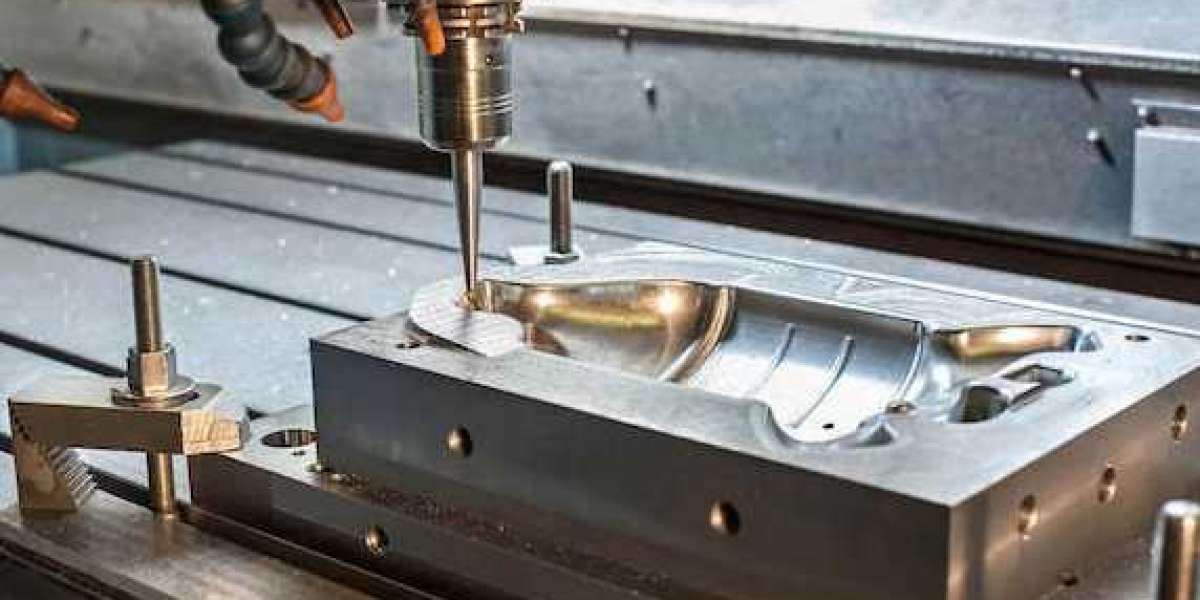Introduction
In today’s manufacturing industry, quality CNC machining is a crucial process that ensures precision, efficiency, and high-quality results. From aerospace to automotive and medical industries, CNC machining plays a vital role in producing intricate parts with minimal errors. This guide explores the essentials of quality CNC machining, its benefits, and how businesses can optimize their machining processes.
What is CNC Machining?
CNC (Computer Numerical Control) machining is an advanced manufacturing process where pre-programmed software directs machines to produce components with high precision. Unlike manual machining, CNC machining allows for automation, ensuring repeatability and accuracy across large production runs.
Key Components of CNC Machining
CNC Machines – Includes milling machines, lathes, routers, and grinders.
Software – CAD (Computer-Aided Design) and CAM (Computer-Aided Manufacturing) software drive precision machining.
Materials – Metals like aluminum, steel, titanium, and plastics like ABS and polycarbonate.
Operators Programmers – Skilled professionals ensure the proper operation and maintenance of CNC machines.
Importance of Quality in CNC Machining
Achieving quality in CNC machining is essential for ensuring durability, functionality, and cost-efficiency in manufacturing. Poor-quality machining can lead to defective parts, higher material wastage, and increased production costs.
Key Factors Affecting CNC Machining Quality
Machine Calibration – Regular calibration ensures precision and accuracy.
Tooling and Cutting Tools – High-quality tools reduce wear and improve efficiency.
Material Selection – Choosing the right material affects durability and machining precision.
Programming Software Accuracy – Properly coded instructions minimize errors.
Operator Expertise – Skilled technicians ensure seamless operations and troubleshooting.
Benefits of High-Quality CNC Machining
1. Precision and Consistency
CNC machining eliminates human errors, ensuring consistent output across multiple production cycles. This precision is crucial for industries requiring tight tolerances.
2. Cost Efficiency
Though CNC machines require an initial investment, they significantly reduce labor costs, material waste, and errors, leading to long-term cost savings.
3. High Production Speed
CNC machining allows for rapid production, meeting high-demand manufacturing needs without compromising quality.
4. Flexibility and Versatility
From complex aerospace components to simple machine parts, CNC machining can handle diverse materials and designs with ease.
5. Enhanced Safety
With automation, the need for manual intervention is reduced, minimizing workplace accidents and improving operational safety.
Best Practices for Achieving Quality CNC Machining
To maintain high-quality CNC machining, businesses should follow best practices that optimize the process and ensure long-lasting results.
1. Invest in High-Quality CNC Machines
Using advanced CNC machines with cutting-edge technology improves accuracy and operational efficiency.
2. Regular Machine Maintenance
Periodic maintenance, including lubrication, calibration, and tool inspection, prevents malfunctions and ensures smooth operations.
3. Use High-Quality Materials
Selecting the right material with optimal mechanical properties enhances the durability and performance of machined components.
4. Optimize Tooling and Cutting Speeds
Using appropriate cutting speeds, feed rates, and high-quality tools minimizes wear and enhances precision.
5. Ensure Proper Programming and Software Utilization
Accurate CAD/CAM programming and regular software updates ensure the machines function correctly and reduce production errors.
Applications of CNC Machining in Various Industries
1. Aerospace Industry
CNC machining is essential in aerospace for manufacturing aircraft components like turbine blades, engine parts, and structural elements with high precision.
2. Automotive Industry
CNC machining produces critical automotive parts such as engine blocks, transmission components, and brake systems, ensuring high-performance standards.
3. Medical Industry
From surgical instruments to prosthetic implants, CNC machining ensures biocompatible, precise, and durable medical components.
4. Electronics Industry
CNC machining is used to manufacture intricate electronic parts like heat sinks, circuit boards, and casings with extreme accuracy.
5. Defense and Military Applications
Military equipment, firearms, and defense systems rely on CNC machining for robust and high-precision manufacturing.
Future Trends in CNC Machining
As technology advances, the CNC machining industry is witnessing significant improvements in automation, AI integration, and sustainability.
1. AI and Machine Learning Integration
Artificial intelligence helps optimize CNC machining processes by predicting tool wear, improving efficiency, and reducing waste.
2. Automation and Smart Manufacturing
Automated CNC systems with IoT connectivity enhance productivity and enable real-time monitoring of machining operations.
3. Sustainable CNC Machining
Eco-friendly machining techniques, such as minimal coolant usage and energy-efficient machinery, are gaining traction to reduce the environmental impact.
4. Hybrid Manufacturing
Combining CNC machining with additive manufacturing (3D printing) allows for innovative designs and improved material efficiency.
Conclusion
Quality CNC machining is a game-changer in modern manufacturing, ensuring precision, cost-effectiveness, and reliability across various industries. By following best practices, investing in the right technology, and staying ahead of industry trends, businesses can leverage CNC machining to achieve superior production outcomes. Whether for aerospace, medical, or automotive applications, high-quality CNC machining remains essential for driving innovation and efficiency in manufacturing.







